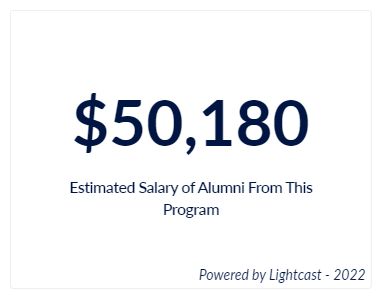Art Education Certification, BA
The Art Education Certification, BA enhances career options for art majors by preparing them to teach art in grades K-12. Shippensburg University has a rich history in teacher education with the only public elementary lab school in the state and students benefit from excellent hands-on experiences.
Get more info
What Will I Learn?
On top of a comprehensive art curriculum, this program gives you the knowledge, skills, experience and compassion to be an effective teacher in public, private and commercial settings.
Graduates will:
- Understand the psychology of artistic development and know how to integrate that knowledge in teaching art to people of differing ages and ethnic backgrounds
- Develop methodology for effective teaching
- Create lesson plans appropriate for a variety of academic venues
- Learn how to communicate effectively
- Demonstrate effective technical skills
- Understand the role of art education in human development
What are the requirements for this degree?
You will take the required courses for the art major, general education courses and the necessary education courses.
Students in their first year are selected for initial entry into programs through the Admissions Office. Teacher preparation programs are “capped” enrollment and therefore are the most difficult to enter at the university. Standards for admission include the top one-third of your high school class and an SAT score of 1060 or higher. You must maintain a 3.0 GPA or above to remain in teacher preparation programs.
Transfer students, both internal and external, and those already possessing a degree are selected for the Art Education Certification, B.A. program based on the following criteria:
- Academic proficiency in college or university coursework, including professional education courses with a cumulative 3.0 GPA by end of 60 credits.
- A grade of C or higher must be achieved in all courses.
- Must pass the Praxis I: Basic Skills proficiency from the Educational Testing Service (ETS).
- Review of a writing sample, a small portfolio of artwork and a personal interview with members of the Art and Design and Education departments.
What Types of Careers Could I Get With This Degree?
The Art Education Certification, B.A. meets Pennsylvania Department of Education requirements/mandates for certification in the teaching of art in grades kindergarten-12. Still, some students may pursue other positions. Skilled artists find jobs in virtually every field where goods or services are present. Careers in art also include graphic design, gallery direction and illustration. You can also find employment as a:
- Web designer
- Videographer
- Animator
- Ceramicist
- Illustrator
- Product designer
- Make-up artist
- Lighting designer
- Special effects artist
If you choose to pursue a career in the fine arts, your options include:
- University art professor
- Art critic
- Conservator or restorer
- Art therapist
Other fine artists continue to make their artwork, exhibit it in galleries, museums, in other types of exhibitions and may apply for grant funding.
Upon receiving their bachelor's degree, some students decide to move into a master's degree program to further their education and continue to grow their experiences.
What Career Outcomes Do Alumni Have With This Degree?


What Kinds of Experiences Could I Have?
As you prepare to become a teacher, you will participate in hands-on learning experiences such as:
- Observation of classes in elementary, secondary and community college settings
- Observation of physically challenged and exceptional learners
- Student teaching placements
While focusing on art, you will have many opportunities to showcase your work in the local community, regionally and nationally. Class sizes are small, which translates into more individualized instruction. This means, unlike bigger art programs, we can provide a student-focused curriculum, leading to greater educational and artistic opportunities.
Ship art students may elect to study at the Art Institute, with eight locations nationwide, or attend the Fashion Institute of Technology in New York during their junior year. There are also regular visits to art museums and galleries. Additionally, involvement with student groups and chances to study abroad also provide excellent opportunities.
In terms of facilities, our department is located in a state-of-the-art center for the studio arts. Our facilities include spacious studios, the finest equipment and tools and computer and technology labs. We also have sculpture and ceramics facilities that include roofed outdoor work areas devoted to innovative firing, welding, casting and carving techniques.
The Kauffman Gallery on campus presents a number of diverse exhibits throughout the year.

